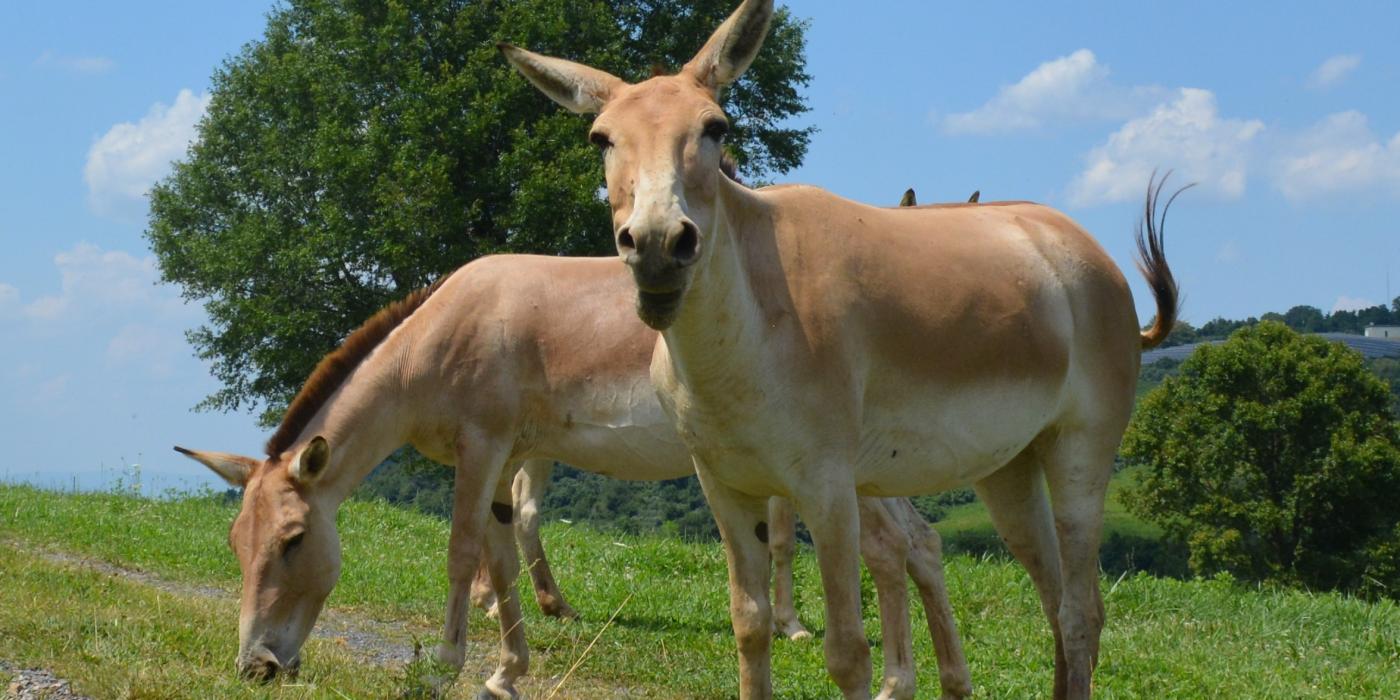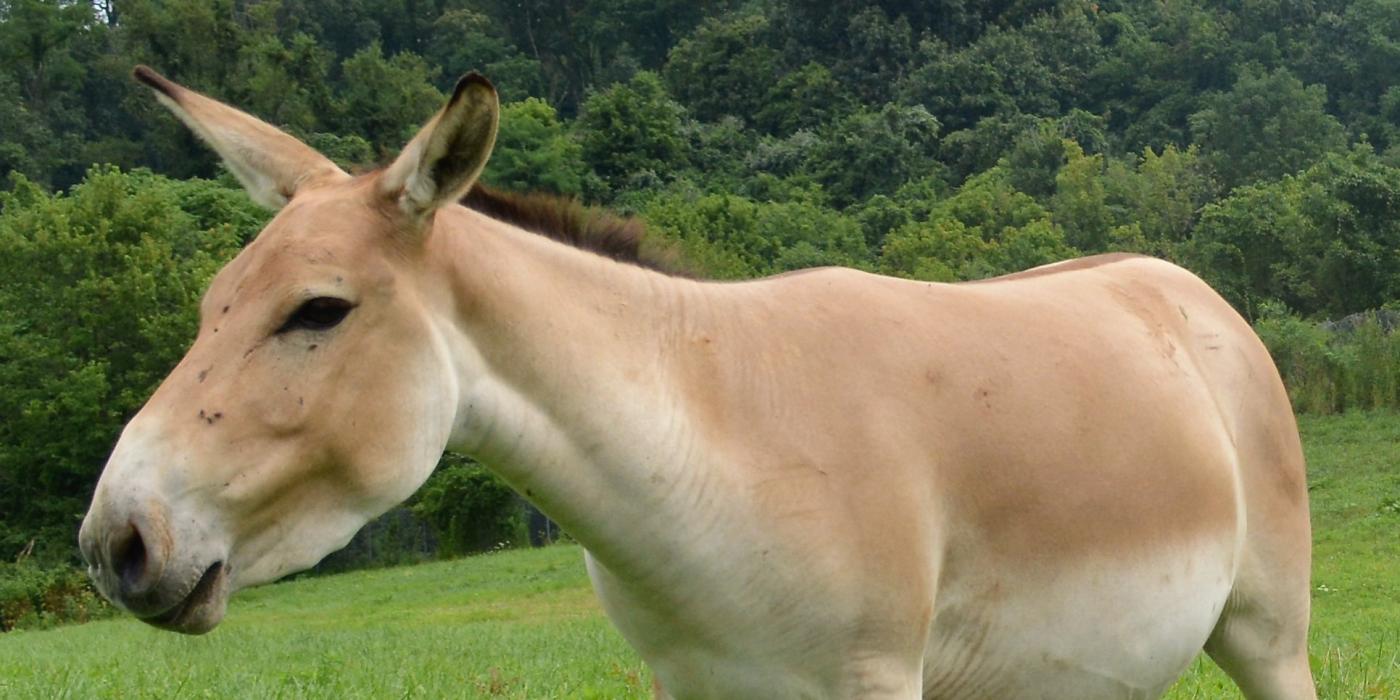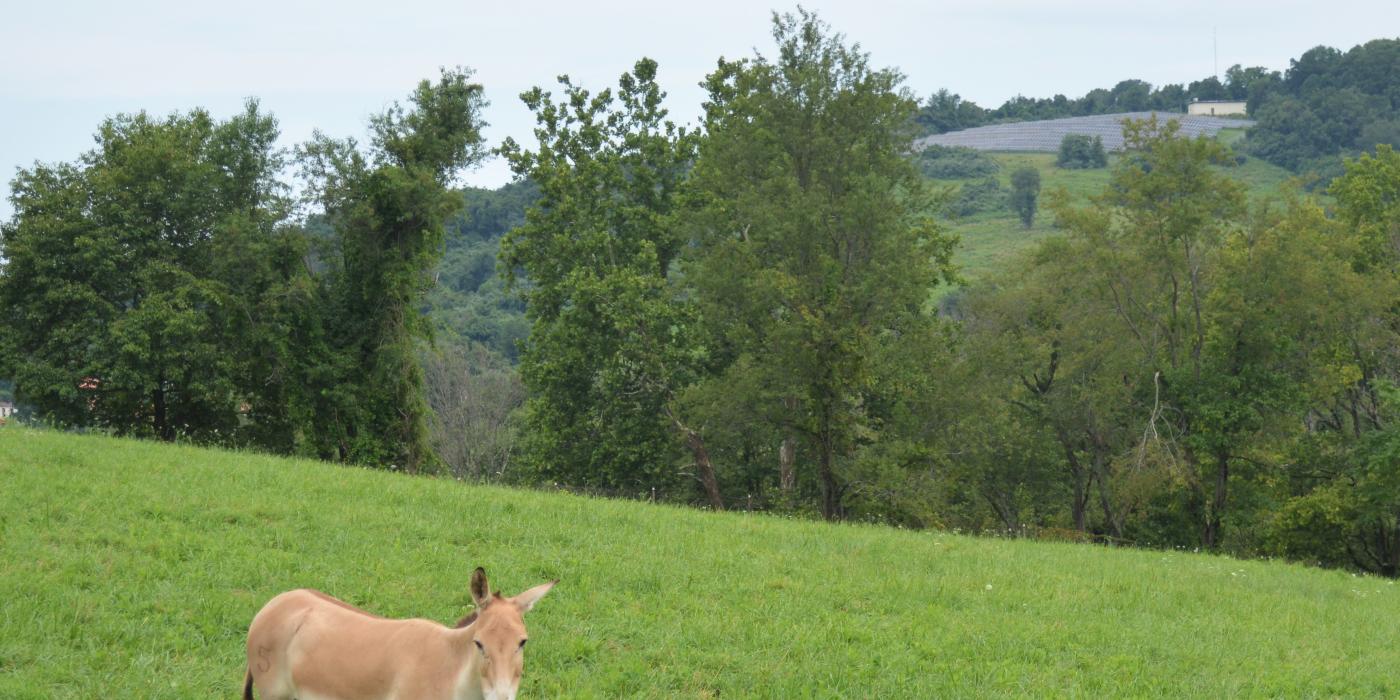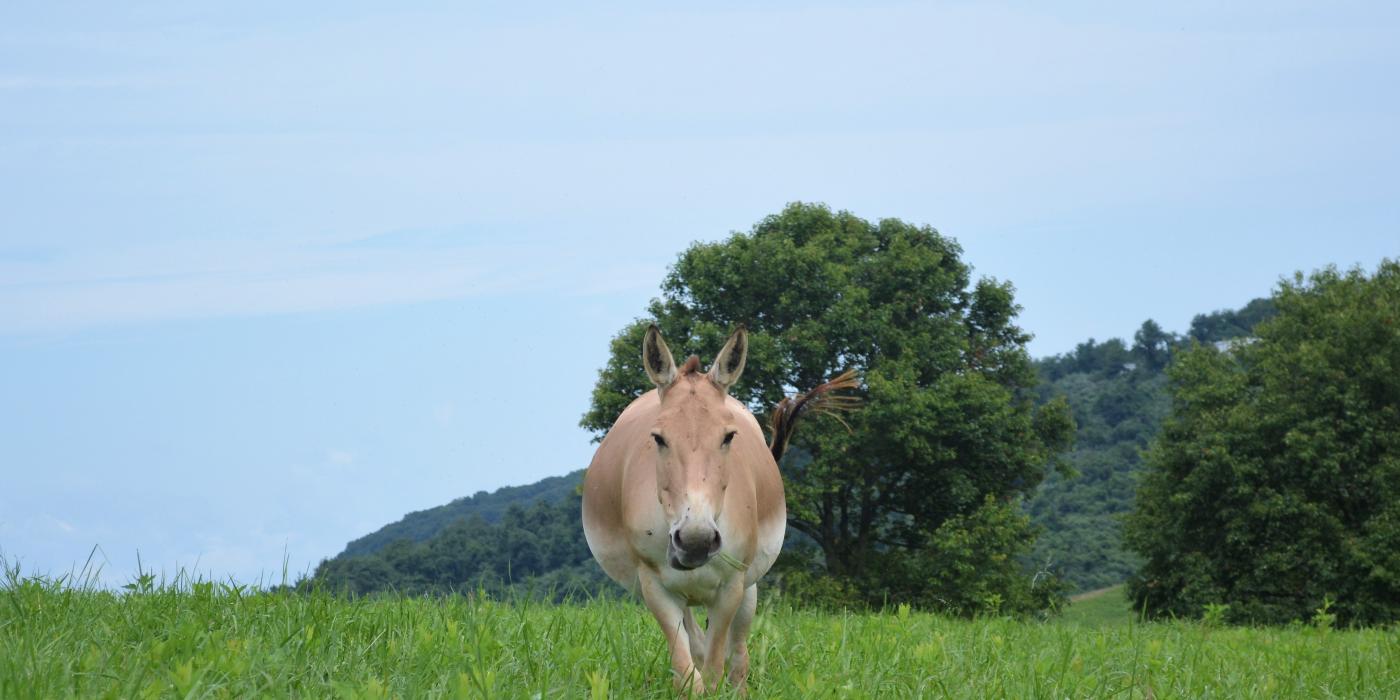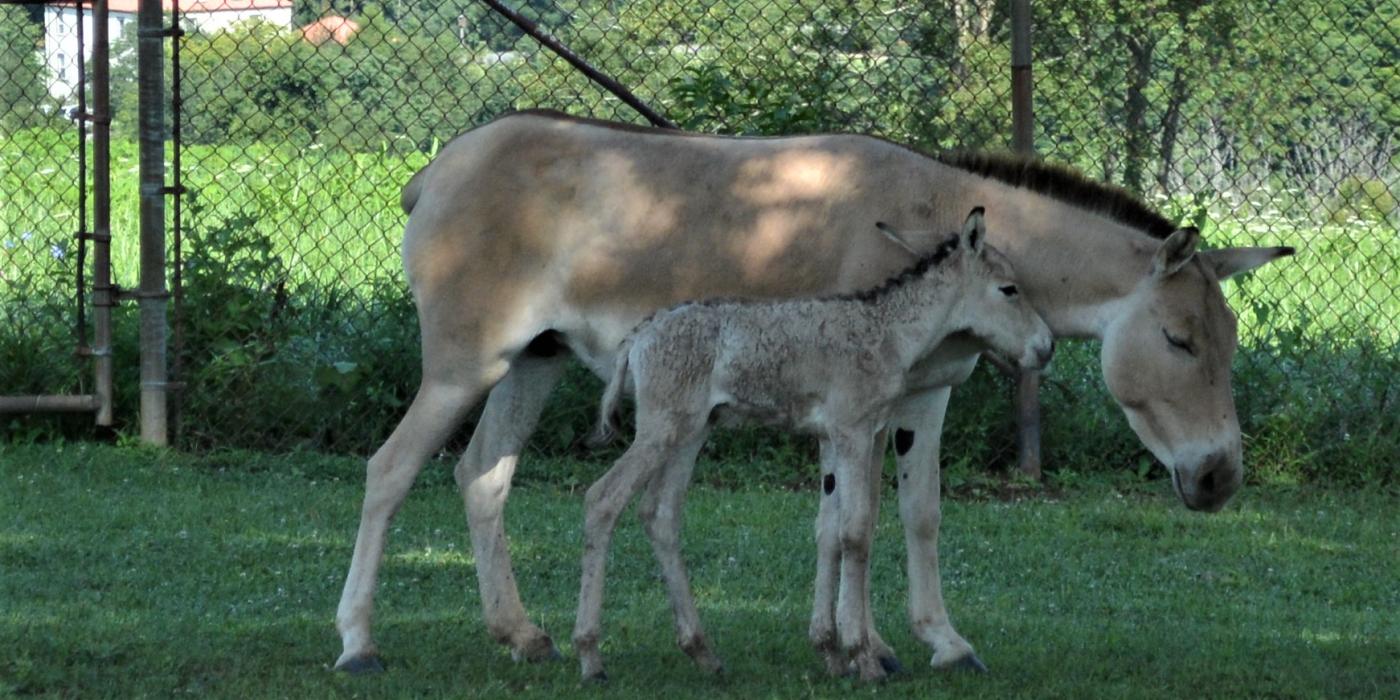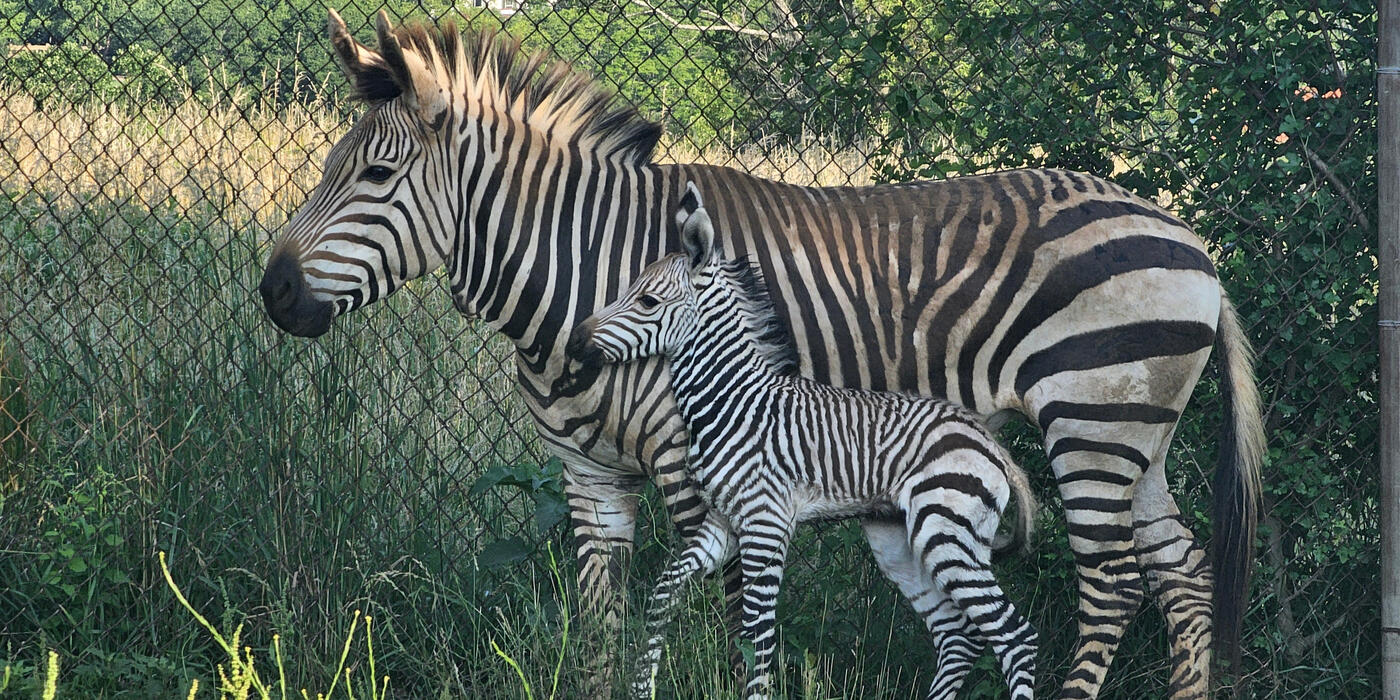Meet the Persian Onager Mares
Even though Persian onagers are a herd species and prefer to live in groups, they don’t have a “hive” mind, they each have distinct personalities! As a keepers, we get to know their personalities and preferences very well. It’s always fun when we get to describe them to people because their individuality really shines. Before I introduce you to our female onagers, let me give you a little primer on onager social dynamics.
If female oangers were to have a catch phrase, it would be “there’s safety in numbers.” Onagers form herds just like all equine species, which in the open arid grasslands of central Asia gives them and their foals protection against predators. Their herds are made up of loose hierarchical systems. They form tight bonds and will stay close to their buddies — it’s almost like the sisterhood of the traveling onagers.
Despite having tight social bonds and preferring to stay in groups for safety, onagers prefer to do some things privately — like give birth. After 365 to 368 days of carrying a foal, when it’s finally time for a female to give birth she will temporarily leave the herd and find a safe place to have her foal. That separation does not last long, though. After she has had the foal, mom and foal will rejoin the herd. Herds are very welcoming of new foals and they stay with their mothers for up to two years in the wild.
Now, without out further ado let me to introduce you to our female onagers!
Yasmin is the fearless leader of our herd at the Smithsonian Conservation Biology Institute. She is a stubborn, protective, easily excitable and vocal 14-year-old mare (a female). She is always the first one to greet the keepers in the morning. Her greeting may not always be filled with glee — even onagers can wake up cranky — but it is without fail always the first greeting you will get from the herd.
Although Yasmin needs to be first to greet us in the mornings, her need to be first does not always extend to new things or situations. She can be hesitant to investigate new things. She has had one colt (boy) named Turan and one filly (girl) named Sayeh. They both still live at SCBI. Turan seems to have inherited much of Yasmin’s personality, but I’ll introduce you to him in a different post.
If Yasmin is our fearless leader, Farah is our “Miss Independent.” Even though she is the youngest in the herd, we often find Farah out on her own — or at least she tries to be, but her sidekick Dorri doesn’t let her go far. While Yasmin can be a bit hesitant with new things, Farah is confident and is completely secure to take the lead when anything new comes her way. This summer though, she has been confidently exploiting the cool stalls in the onager barn. She is pregnant and has been seeking out the comfort of the cooler air and shade in the barn, even though she is capable of withstanding punishing heat of 120 degrees Fahrenheit.
Dorri is Farah’s shadow and likes to be at her best friend’s side at all times. Seven-year-old Dorri lets Farah take the lead when it comes to new things, even though Farah is younger than her. For the most part, Dorri has a goofy personality. She can be a little uneasy in new situations and relies on her friend Farah to keep her calm. Much like Farah, she too is very pregnant, and we think that the birthing windows for these two will be very close together.
Zaria is our oldest mare. She is 16 years old and her life experience shows in her laid back attitude. When it comes to all new things and treats, she is not as excitable, but is instead extremely laid back and confident. She has a constant calming energy about her, and we are grateful to have that kind of energy around since we are expecting foals soon.
Finally, there is Sayeh! She is always last to come up for biscuits, but we make sure she gets her fair share when we are training. Sayeh is 11 years old and she recently gave birth to her first foal August 1. We suspect that the foal is a colt, but we’re not sure because Sayeh is being very protective of him. She is taking great care of him and we’ve seen her nursing him several times.
Related Species:

